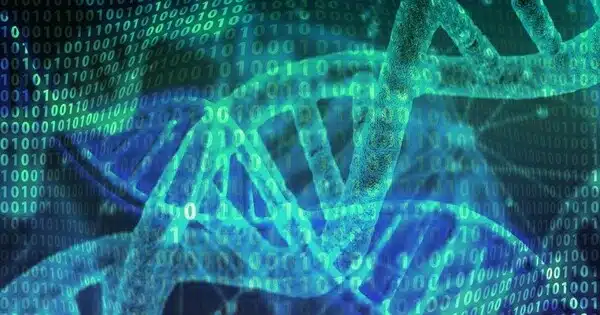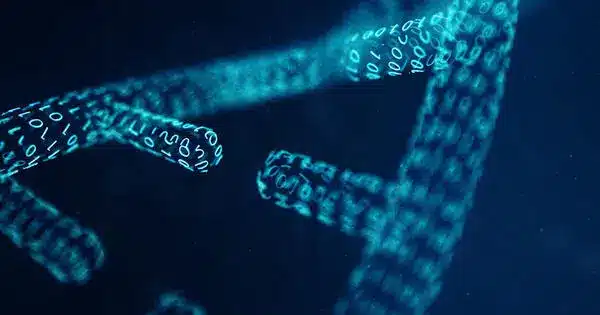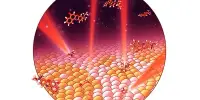DNA microcapsules have emerged as a promising new approach to data storage due to their ability to store large amounts of information in a compact and durable format. Because DNA, the molecule that contains the genetic instructions for living organisms, is incredibly stable and easily replicated, it has the potential to store vast amounts of digital information.
Data storage in DNA may sound like science fiction, but it is a reality in the near future. Professor Tom de Greef anticipates that the first DNA data center will be operational within the next five to ten years. Data will be stored in the base pairs that make up DNA, AT, and CG, rather than as zeros and ones on a hard drive. Such a data center would be the size of a lab, much smaller than the ones we have today. De Greef can already see everything. New files will be encoded using DNA synthesis in one section of the structure. Another section will have large fields of capsules, each capsule containing a file. A robotic arm will extract a capsule, read its contents, and replace it.
We’re discussing synthetic DNA. Bases are joined together in a specific order in the lab to form synthetically produced strands of DNA. Currently, stored files and photos in data centers can be stored in DNA. For the time being, the technique is only suitable for archival storage. This is due to the high cost of reading stored data, so you want to consult the DNA files as little as possible.
There are numerous advantages to storing data in DNA. A DNA file, for example, can be stored much more compactly, and the data’s lifespan is many times longer. But, perhaps most importantly, this new technology eliminates the need for large, energy-intensive data centers.
De Greef
Large, energy-guzzling data centers made obsolete
There are numerous advantages to storing data in DNA. A DNA file, for example, can be stored much more compactly, and the data’s lifespan is many times longer. But, perhaps most importantly, this new technology eliminates the need for large, energy-intensive data centers. And this is critical, according to De Greef, “because in three years, we will generate so much data worldwide that we won’t be able to store half of it.”
De Greef has developed a new technique to make the innovation of data storage with synthetic DNA scalable in collaboration with Ph.D. student Bas Bögels, Microsoft, and a group of university partners. The findings were published in the journal Nature Nanotechnology.
De Greef works at the Department of Biomedical Engineering and the Institute for Complex Molecular Systems (ICMS) at TU Eindhoven and serves as a visiting professor at Radboud University.

Scalable
The concept of using DNA strands for data storage first emerged in the 1980s, but it was far too difficult and expensive at the time. When DNA synthesis took off three decades later, it became technically feasible. In 2011, George Church, a geneticist at Harvard Medical School, expanded on the concept. Since then, data synthesis and reading have become exponentially cheaper, bringing the technology to market.
In recent years, De Greef and his colleagues have focused primarily on reading the stored data. For the time being, this is the most serious issue confronting this new technique. The current PCR method, known as ‘random access,’ is highly error-prone. You can therefore only read one file at a time and, in addition, the data quality deteriorates too much each time you read a file. Not exactly scalable.
Here’s how it works: PCR (Polymerase Chain Reaction) creates millions of copies of the piece of DNA that you need by adding a primer with the desired DNA code. Corona tests in the lab, for example, are based on this: even a minuscule amount of coronavirus material from your nose is detectable when copied so many times. But if you want to read multiple files simultaneously, you need multiple primer pairs doing their work at the same time. This creates many errors in the copying process.
Every capsule contains one file
This is where the capsules enter the picture. De Greef’s team created a protein-polymer microcapsule and then anchored one file per capsule. De Greef: “These capsules have thermal properties that we can use to our advantage.” When the temperature rises above 50 degrees Celsius, the capsules seal themselves, allowing the PCR process to occur separately in each capsule. There’s not much room for error there. This is referred to as ‘thermo-confined PCR’ by De Greef. It has so far read 25 files simultaneously in the lab without significant error.
If you then lower the temperature again, the copies detach from the capsule, and the anchored original remains, meaning that the quality of your original file does not deteriorate. De Greef: “We currently stand at a loss of 0.3 percent after three reads, compared to 35 percent with the existing method.”















